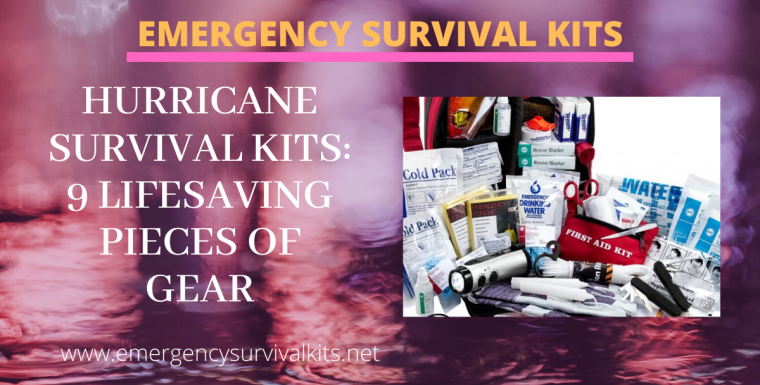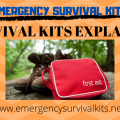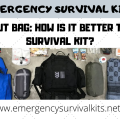Hurricane survival kits are important. And after living through 10 hurricanes, I’ll tell you why. Recently, Sandy drove right up the Atlantic not far off of the Virginia capes and took a sharp left to New Jersey. Many people were prepared, and another bunch just didn’t even try. In Virginia we got lucky… this time.
10 years ago, it was a different story. With Isabel we were at the storms mercy. The power was out for weeks. Neighbors were sharing generators and supplies. it was as if we were thrown back to the 1800’s. Anyone without a hurricane survival kit of any kind was caught empty handed.
What’s odd is that many don’t heed warnings when the storm is bearing down on them. They don’t use survival checklists or anything. This happened in Katrina and Sandy.
There were many who heeded the warnings. Most of those same people relied on what was left on the store shelves to provide them with their needs. Of course we know what happens in those circumstances.
All the store shelves empty quickly. But for you it will be different. After reading this article, you’ll know the key items that go into a hurricane preparedness kit. And it will make you a little more independent of the rest of the people out there.
SO HERE’S WHAT WE’RE GOING TO DO…
We are going to build a 72 hour hurricane survival kit. 72 hours because that’s how long it might take rescue people to show up. And we’re going to build it two parts.
So first up will be to build a core survival kit. This core part will be the basic survival parts that everything else will be built around. After that, Step 2 will be adding capability through items that are unique to a hurricane situation.
If you want to get really crazy, you could have not only a hurricane module, but a medical module, a communications module, etc. It makes organizing things a lot easier, and you don’t risk forgetting essentials when the moment arrives. However, for this article, we are going to stick with the core and a hurricane module.
We will finish up with some added reference items to help with planning and survival kit checklists. This will include some iPhone apps.
GEAR ITEM 1: CONTAINERS FOR ORGANIZATION
GearPods are where it all starts. The core part of your home made kit will be in a separate container like a GearPod, or it could be a section of your bug out bag. No matter what it is, it has to be an easy place to act as a container for the core.
Start the core with a hurricane preparedness list. Next are food items.
GEAR ITEM 2: WATER PURIFIER
My suggestion for water would be not to store water but to process water. So the solution would be to either boil the water that you encounter or have in the home. Steri-Pen UV wind up water filters are awesome. I have the battery operated version of this, and t works great. But the windup is even better the because you never have to buy batteries for it. it’s very portable.
GEAR ITEM 3: TYVEK SHELTER
Tyvek for shelter is essential. Reason why is if you are in a flood zone, your home might be destroyed and you may also require floodlights you can get if you click here. So if you find yourself without shelter, check out the piece on Tyvek shelters. They are lightweight, waterproof and durable. Tyvek is great for stuffing into your survival kit because it doesn’t take up that much room. Pack in some Paracord and you’ve got line to tie to trees. Tyvek on your hurricane supply list is a must have.
GEAR ITEM 4: FROGGTOGGS
With hurricanes there’s no shortage of rain. Waterproof clothing is essential to have. One of my favorite pieces of outerwear that I own is my FroggToggs jacket. All hurricane emergency kits should have something like this that’s so packable and light. These are the most waterproof items of clothing I’ve ever seen or tested. Right now Wal-Mart sells them in the camping section. You could wear these as clothes and wouldn’t believe how lightweight and packable they are. They remind you of Tyvek but shed water like you wouldn’t believe.
GEAR ITEM 5: BLASTMATCH
Electricity is one thing you never want to forget in your hurricane home checklist. But as recent hurricanes have shown us, it can happen. In that case you need to know how to quickly start a fire. The cheapest fastest and most foolproof way to starting a fire is with a combo of two products. The first is a thing called the blast match. The Blast-Match is a one-handed rod and striker mechanism for generating sparks. You hold it with one hand and push down on it and sparks come flying out of the device.
GEAR ITEM 6: WETFIRE TINDER
The second item that’s essential to starting a fire is a thing called WetFire tinder. Wet fire tinder comes in the form of small blocks. Start out by slicing little shavings off of a block and use the Blast-Match to generate sparks onto the shavings. You will have a fire so fast it’ll blow your mind. Once the shavings are on fire you can add additional twigs and tinder and soon enough you’ll have a real fire.
GEAR ITEM 7: GPS NAVIGATION
In most cases with a hurricane you won’t have to leave your home. The only situation that might come up is major flooding. If that happens then you have to leave and you might need some form of navigation. This is where a GPS comes handy. As a matter fact your car might not be drivable or the roads might be absolutely jam-packed. In that case you might have to bug out on foot.
The hurricane module is pretty simple. Three things will be essential in this part of all homemade hurricane survival kits. Notice that all of them require some sort of power. Assume the grid will be down. So solar, windup and other sources are the key.
GEAR ITEM 8: COMMUNICATIONS
Of course your cell phone is a great starting point. Even if cell service dies, you may be able to text, like our family did with Katrina. Twitter works too.
1 way communications – A simple radio will do. Wind up is the best. I’d stick with Kaito or Freeplay models. Avoid the Eton SolarLink models. I’ve tried the FR360 and its bad.
One radio that has great reviews is the WR111A Ambient Weather Adventurer Solar Hand crank with cell phone charger. Its nice because you can hand crank it to charge your cell phone as well.
2 way communications – If you get flooded out and stuck, then 2 way communications will be needed. A simple FRS/GMRS might do the trick. CB is better, although the channels will be crowded.
HAM is great because there are plenty of mobile units our there that are small enough to fit into a fanny pack survival kit for hurricane use. also, believe it or not, you can find ham radios for under $50. For the range you get out of them, its a fantastic deal. HAM is the best, but you’ll need a license before you can operate it.
GEAR ITEM 9: HEAT/ELECTRICITY
The one thing that you want to have when the power goes out is a thing called BioLite stove. what is a small rockets though that takes to a small tinder in the bottom. so in that regard it’s a very conventional camping stove. And it’s not a very big one either so it’s not a big one when it comes to packing away.
The thing that makes the BioLite is that it has a device mounted to the side of the stove itself. this device has the ability to convert heat into electricity and has a USB port mounted on it. so what you do is light a fire in the stove itself.
Then you plug your cell phone into the USB port. And the heat from the stove creates electricity to power in cell phone or small electronic device. It’s the most amazing thing I’ve seen in a long time. it’s a game changer. And you can get it from there under $150.
GEAR EXTRA: ILLUMINATION
Wind up wins again. When a storm is bearing down on you one of the first things to go is batteries. And a great tool is a wind up device. Remember the radio we talked about a little earlier? The WR 111 A? It has a built in windup flashlight. So you are combining flashlight, radio and recharger all in one.
GEAR EXTRA: CHECKLISTS AND APPS
Hurricane supply checklists are underrated. But they are huge. And the iPhone is great for checklists. Here are a few apps that I’m using and they… just work. I have used each one.
ListPro – listpro is a versatile list making app. It not only has a windows and mac version but it also runs on the iPhone. Easy to sync between platforms. I almost live out of this program both at home and at work.
Teudeaux – if you want a simple list program but does what it does very well, then this is the ticket. You can create online accounts for free and it will sync with your device.
ToodleDo – the MacDaddy of list programs. You can categorize everything in your list from here to eternity. If you don’t watch out, it can overwhelm you with an overload of info. But its very capable as a checklist program.
Nubi Do – great app for lists.
ListWrangler – this app lets you create template lists to kickstart your list making efforts. For a hurricane checklist.. it would be a nice way to go.
Some are free and some are very cheap. And most of them sync with the web but can run on your device even if the grid goes down.
As you put your list together, break everything into sublists. Like who to contact, where to go, what to do in case XYZ happens.
If you want pages upon pages and illustrations of survival info, check out the Army Survival Book Collection – for iPhone & iPad. Its got over 10,000 pages and includes 24 books included in the app and each can be downloaded for free View on iTunes for 99 cents, its a steal.
Other iPhone apps to check out are the disaster alerts.
AlertsUSA lets you know the latest alerts throughout the US and the world
Disaster Alert give you an interactive map of current and real-time hazards happening around the world every 5 minutes View on iTunes.
Now that you’ve read this article you have a good idea of the kinds of supplies that will help you make it through the hurricane. And you know how to build and assemble a hurricane survival kit.
But with every hurricane, one of the first things to go out is communications. So Right now your first step is to check out the article on survival communications. you can begin planning to create a communications module for your hurricane survival kit.
Article Source: Hurricane Survival Kits: 9 Lifesaving Pieces Of Gear








